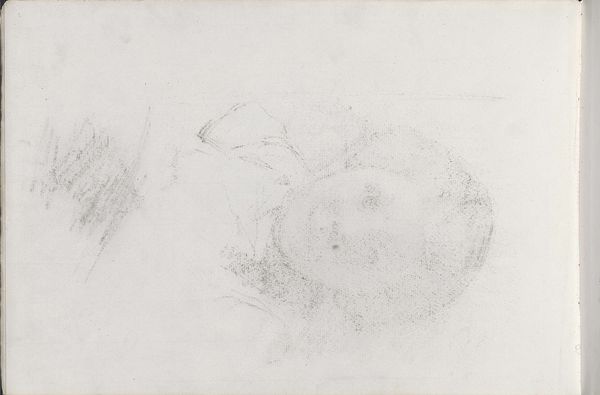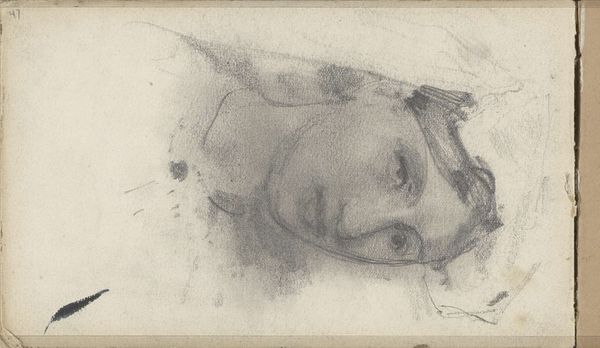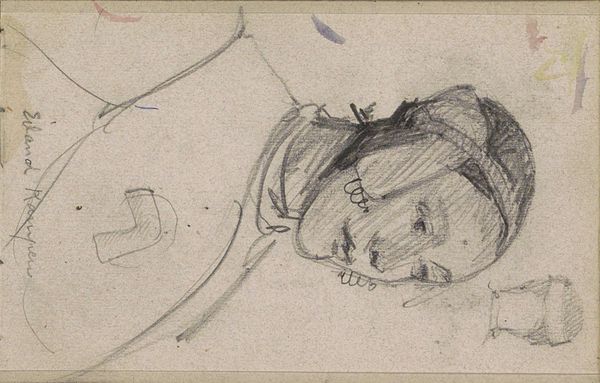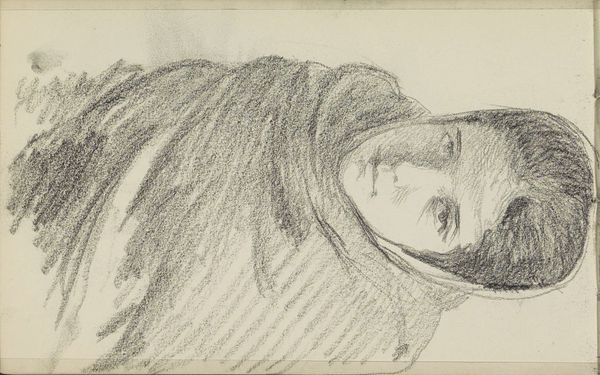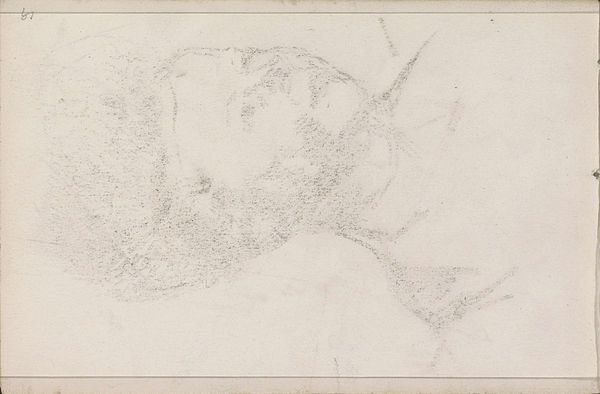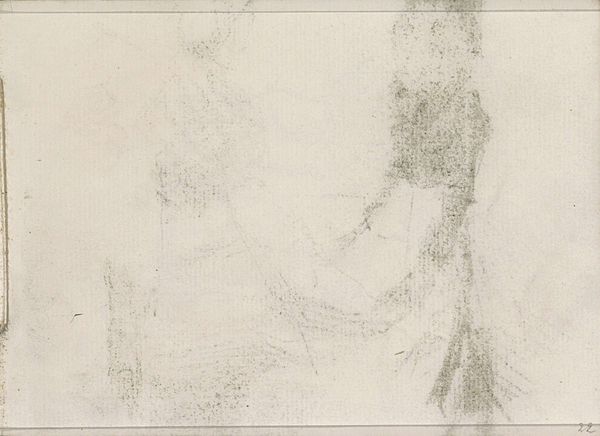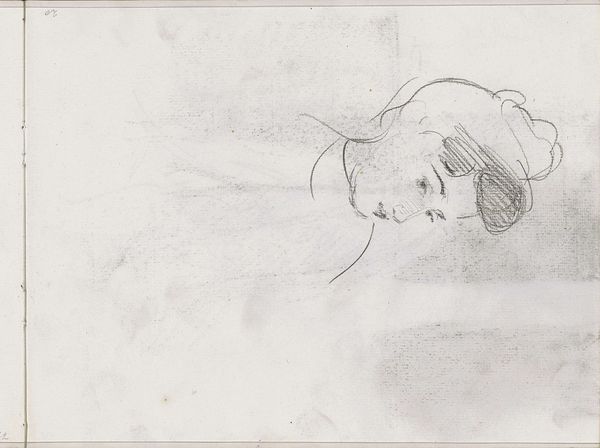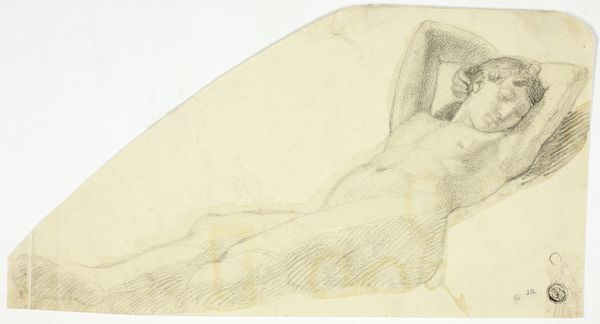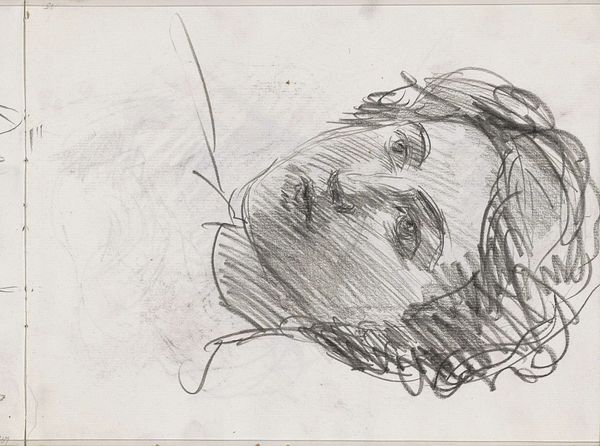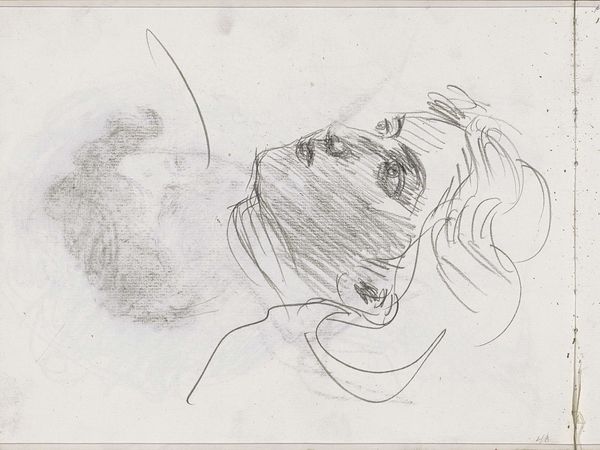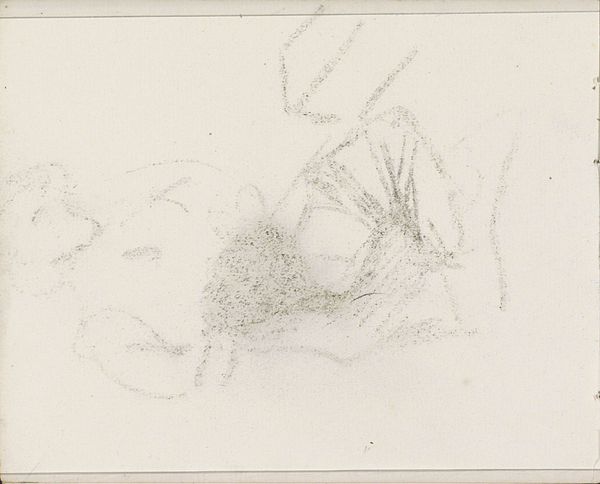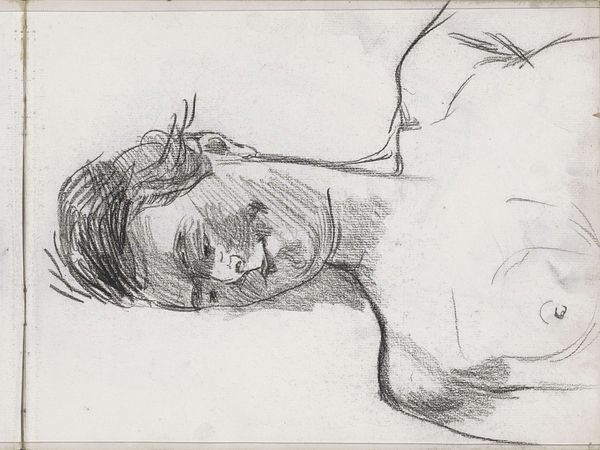
Copyright: Rijks Museum: Open Domain
Curator: Immediately, there is an ethereal, almost dreamlike quality to this work. The textures are subtle, with varying shades of grey delicately layered to construct form. It almost reminds me of the pointillist approach to artmaking with careful hatching throughout. Editor: We're looking at "Abklatsch van de krijttekening op blad 2 recto" a drawing made with pencil on paper. The work dates somewhere between 1875 and 1934 and is currently held at the Rijksmuseum. It's attributed to Isaac Israels. Curator: Israels' involvement with Impressionism, and his representation of modern life really comes through here. One could read this piece as evidence of an era preoccupied with quick-studies of fleeting moments in everyday settings. Who do you suppose this figure represents? The casual way in which the model seems seated suggests the rise of leisure activities and the evolving role of portraiture at the time. Editor: From a formal standpoint, the contrast and limited range of tones draw me in. The stark negative space emphasizes the contours, creating a striking visual rhythm. I think this compositional strategy reveals something profound. Consider the artist’s intention of negative space and lines used to compose. Curator: Absolutely, and let's not forget that this drawing is titled "Abklatsch van de krijttekening op blad 2 recto," suggesting that this piece itself might be a reproduction of an original drawing in a sketchbook or study, meant for further elaboration into something else. That opens up many questions around production in Israels' studio. Was he intending to showcase an under drawing, a study that reveals a deeper context surrounding the working model? Editor: I agree, there's definitely a raw and expressive quality in the texture, perhaps suggesting the immediacy in the gaze of the working figure. Curator: What an intriguing piece! Viewing it has really highlighted the historical setting while pointing to considerations around drawing practices of the time. Editor: It makes you reconsider, doesn’t it? To analyze an artwork’s details can often provide clues for considering and questioning more context around the artwork.
Comments
No comments
Be the first to comment and join the conversation on the ultimate creative platform.
